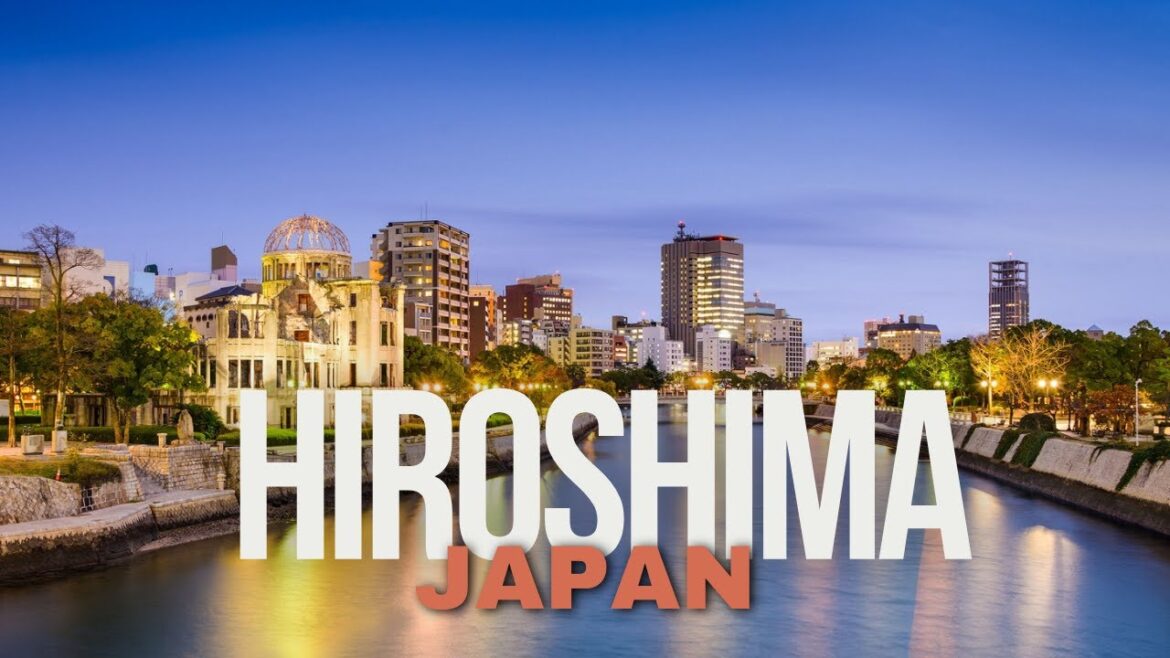Hiroshima City – Japan #travel #geography #Japan #japantourism #amazingfacts
Hiroshima, a city with a profound history and resilience, stands as a symbol of both the devastation wrought by war and the enduring spirit of peace and reconciliation. Located on the southwestern coast of Japan’s Honshu Island, Hiroshima is renowned worldwide for being the target of the first atomic bomb ever used in warfare on August 6, 1945, during World War II.
Before the catastrophic events of 1945, Hiroshima was a vibrant and culturally rich city, known for its historic landmarks, thriving economy, and picturesque surroundings. It was a center of commerce, education, and industry, with a population that cherished its traditions while embracing modernity.
However, the course of Hiroshima’s history was forever altered when the Enola Gay, a United States B-29 bomber, dropped the atomic bomb, code-named “Little Boy,” over the city. The explosion instantly obliterated buildings, infrastructure, and tens of thousands of lives, leaving behind unimaginable devastation and suffering. The aftermath of the atomic bombing was characterized by widespread destruction, fires, and the onset of radiation sickness among survivors.
In the wake of such unprecedented tragedy, Hiroshima emerged as a beacon of hope and resilience. Despite the immense challenges of rebuilding a city from the ashes, Hiroshima’s citizens demonstrated remarkable courage, solidarity, and determination to rebuild their lives and their community.
Central to Hiroshima’s post-war narrative is its unwavering commitment to peace and nuclear disarmament. The city’s Peace Memorial Park, established near the epicenter of the atomic blast, serves as a poignant reminder of the horrors of nuclear warfare and a testament to the enduring quest for peace. At the heart of the park stands the iconic Atomic Bomb Dome, a skeletal ruin preserved as a UNESCO World Heritage Site, symbolizing both the tragedy of the past and the hope for a future free from nuclear weapons.
Hiroshima’s dedication to promoting peace extends beyond its borders, as evidenced by its active involvement in international peace initiatives and its hosting of the annual Hiroshima Peace Memorial Ceremony on August 6th, where people from around the world gather to honor the victims of the atomic bombing and reaffirm their commitment to peace.
In addition to its historical significance, Hiroshima is a vibrant modern city that embraces progress while honoring its heritage. Today, Hiroshima boasts a thriving economy, cultural diversity, and a flourishing arts scene. Visitors to the city can explore its museums, temples, and gardens, sample its renowned cuisine, and experience the warmth and hospitality of its people.
In conclusion, Hiroshima’s story is one of tragedy and triumph, destruction and renewal, war and peace. From the ashes of devastation, Hiroshima has risen as a symbol of hope, reconciliation, and the enduring human spirit. Through its commitment to peace, remembrance, and advocacy, Hiroshima continues to inspire the world to strive for a future where the horrors of war and nuclear weapons are but distant memories.

